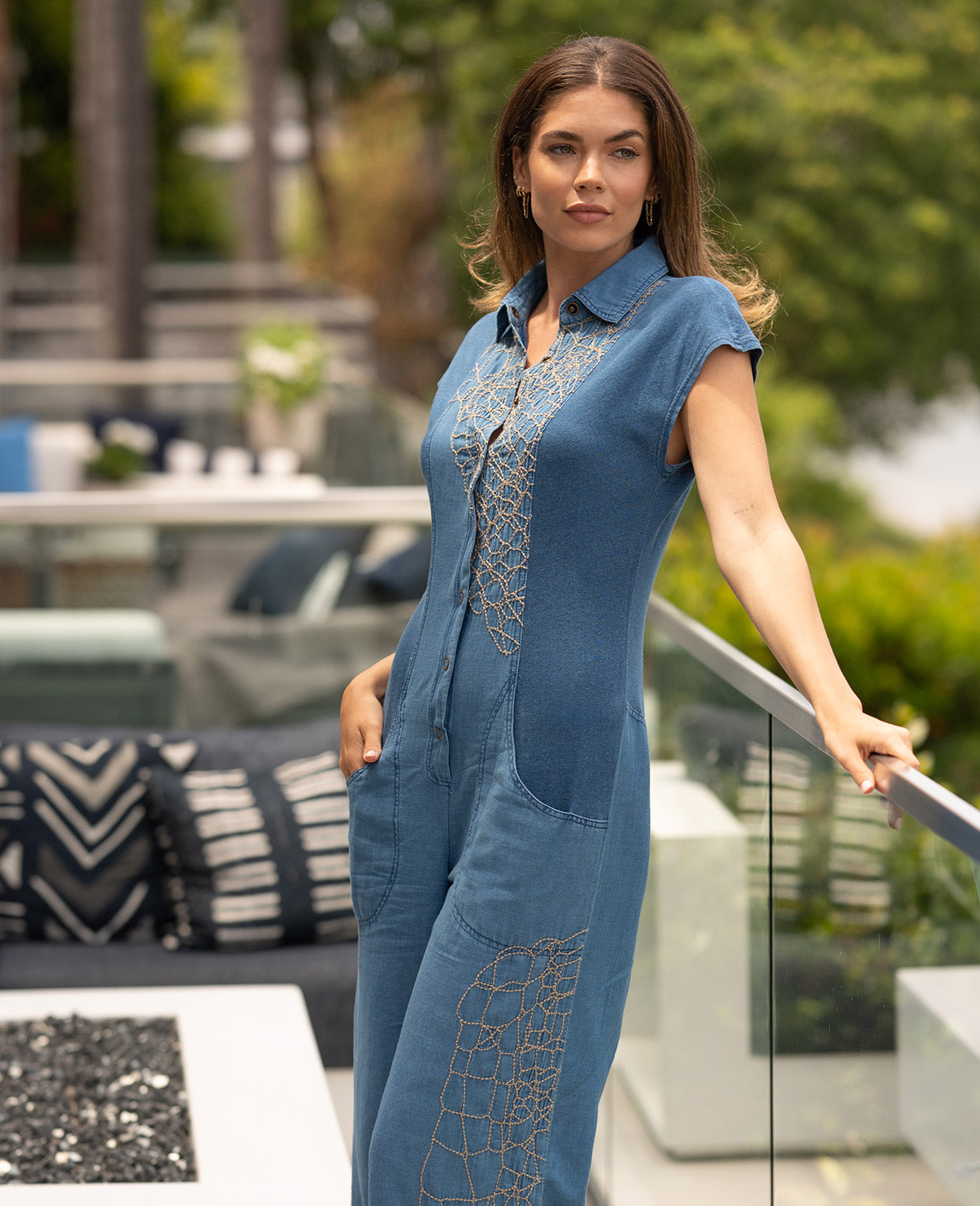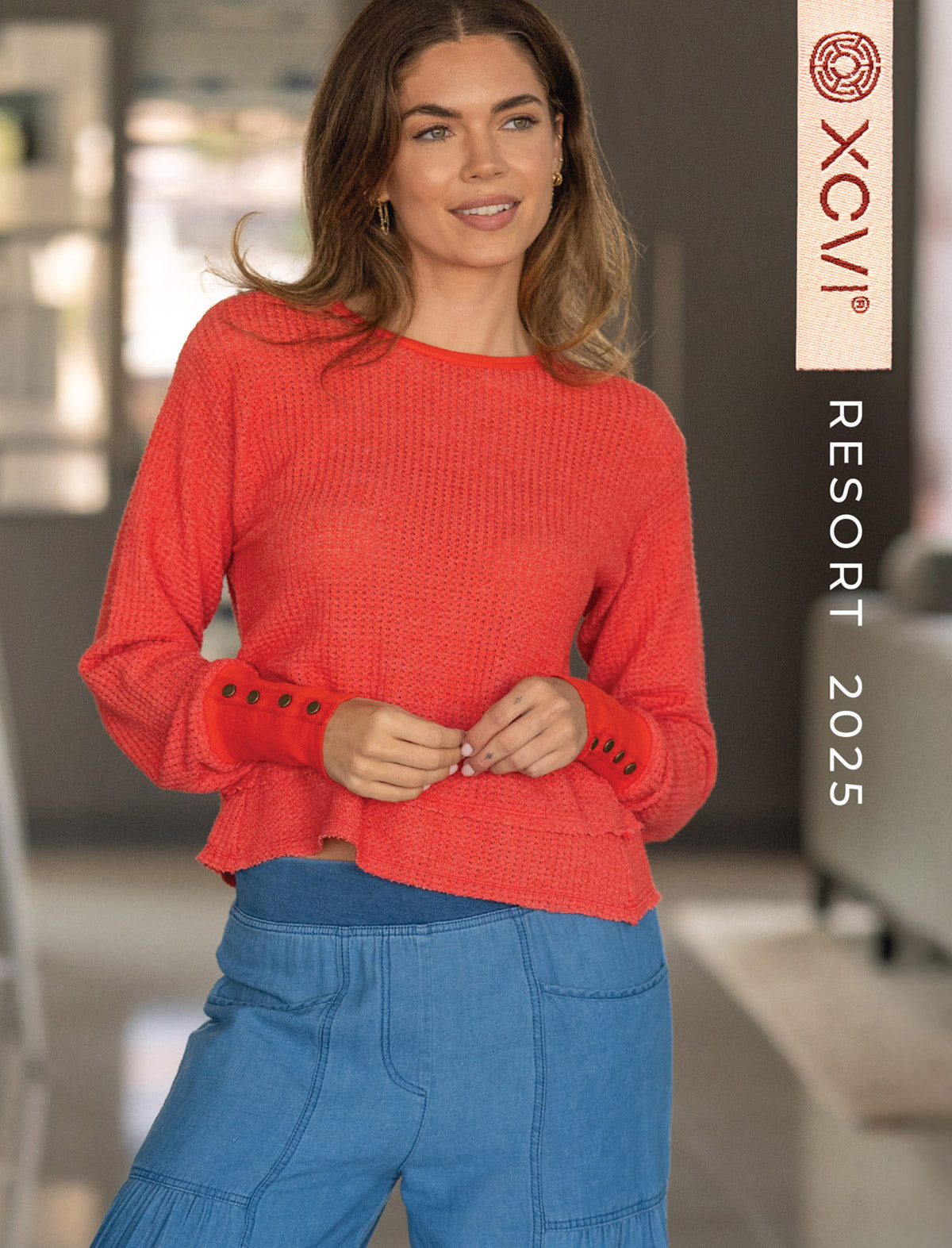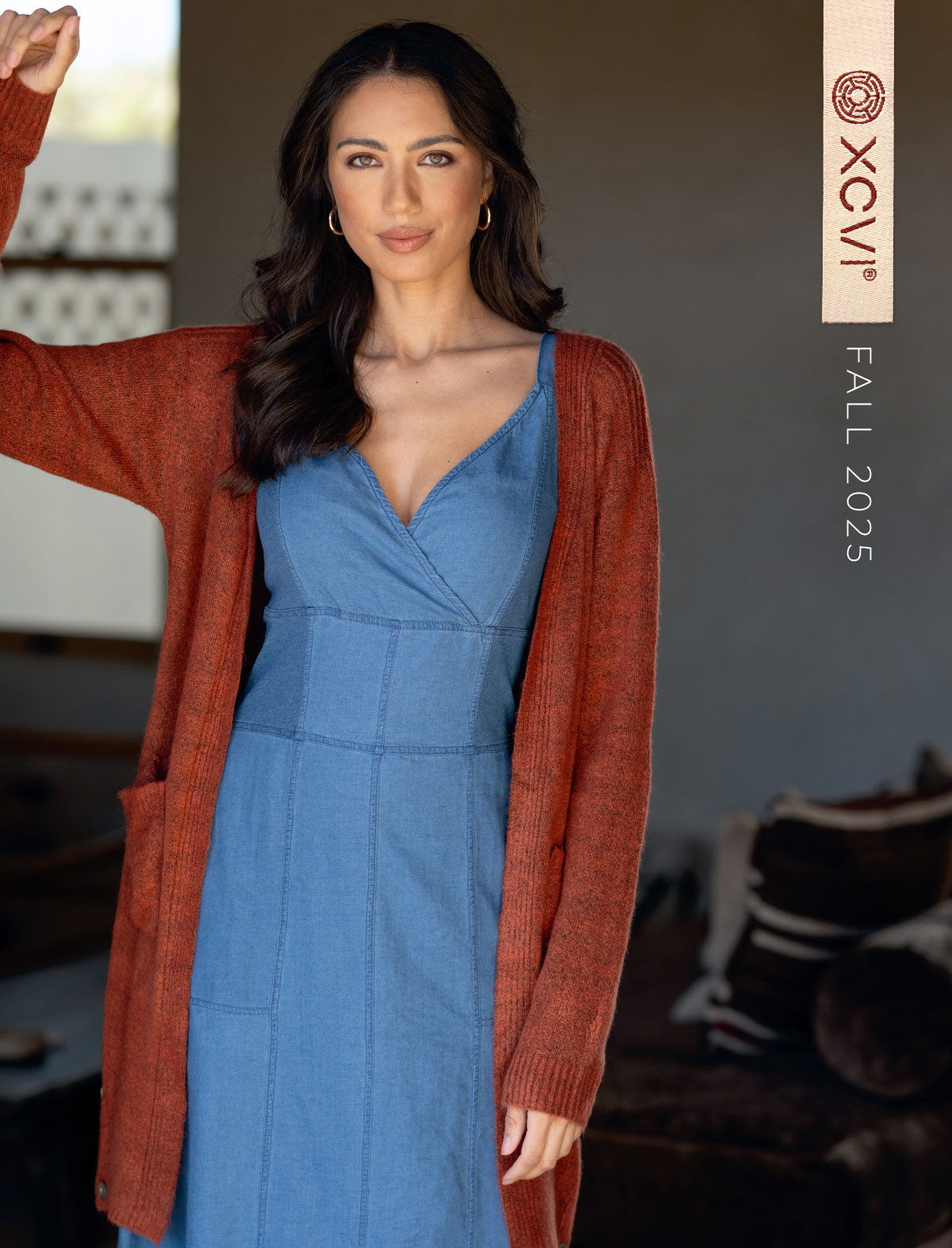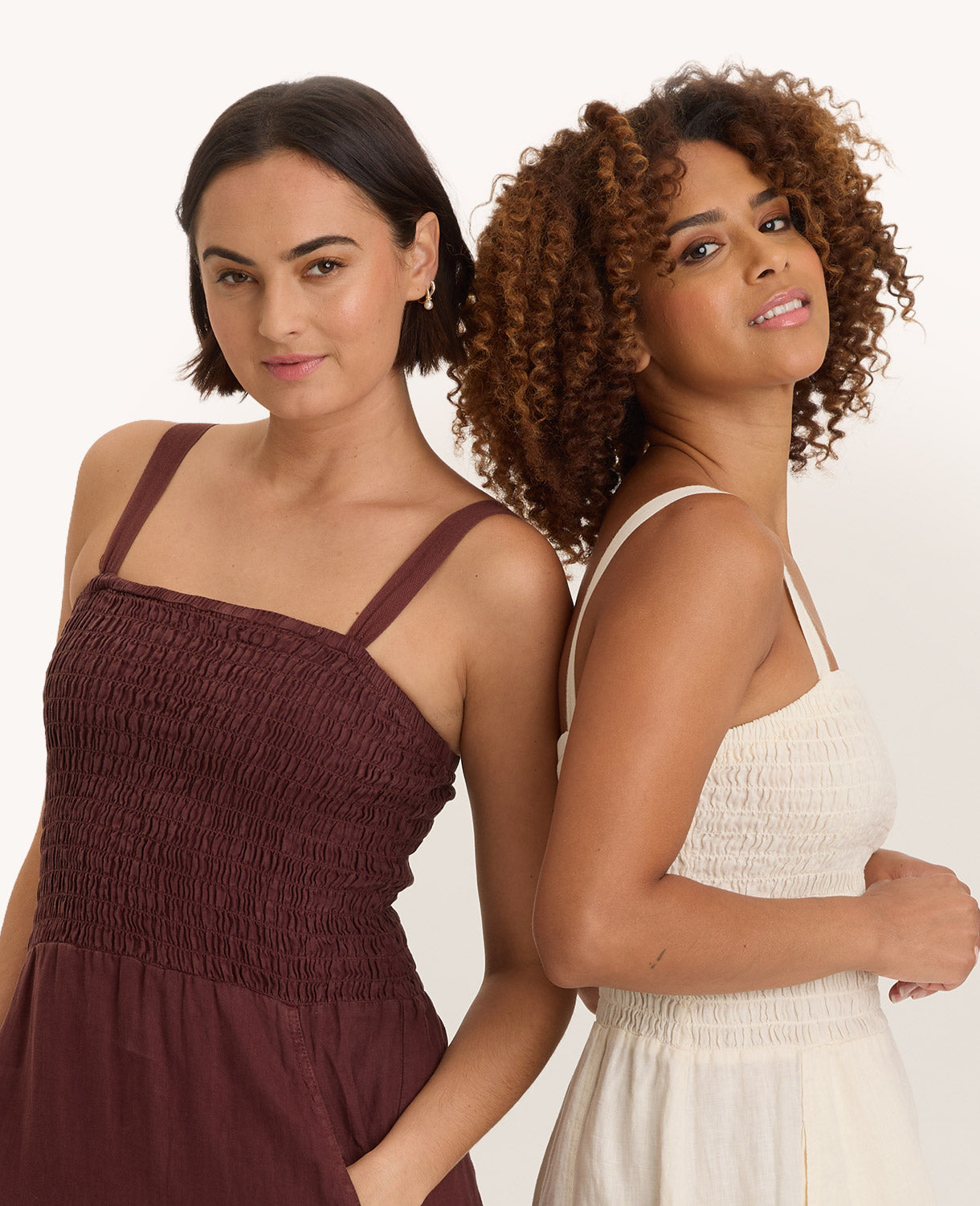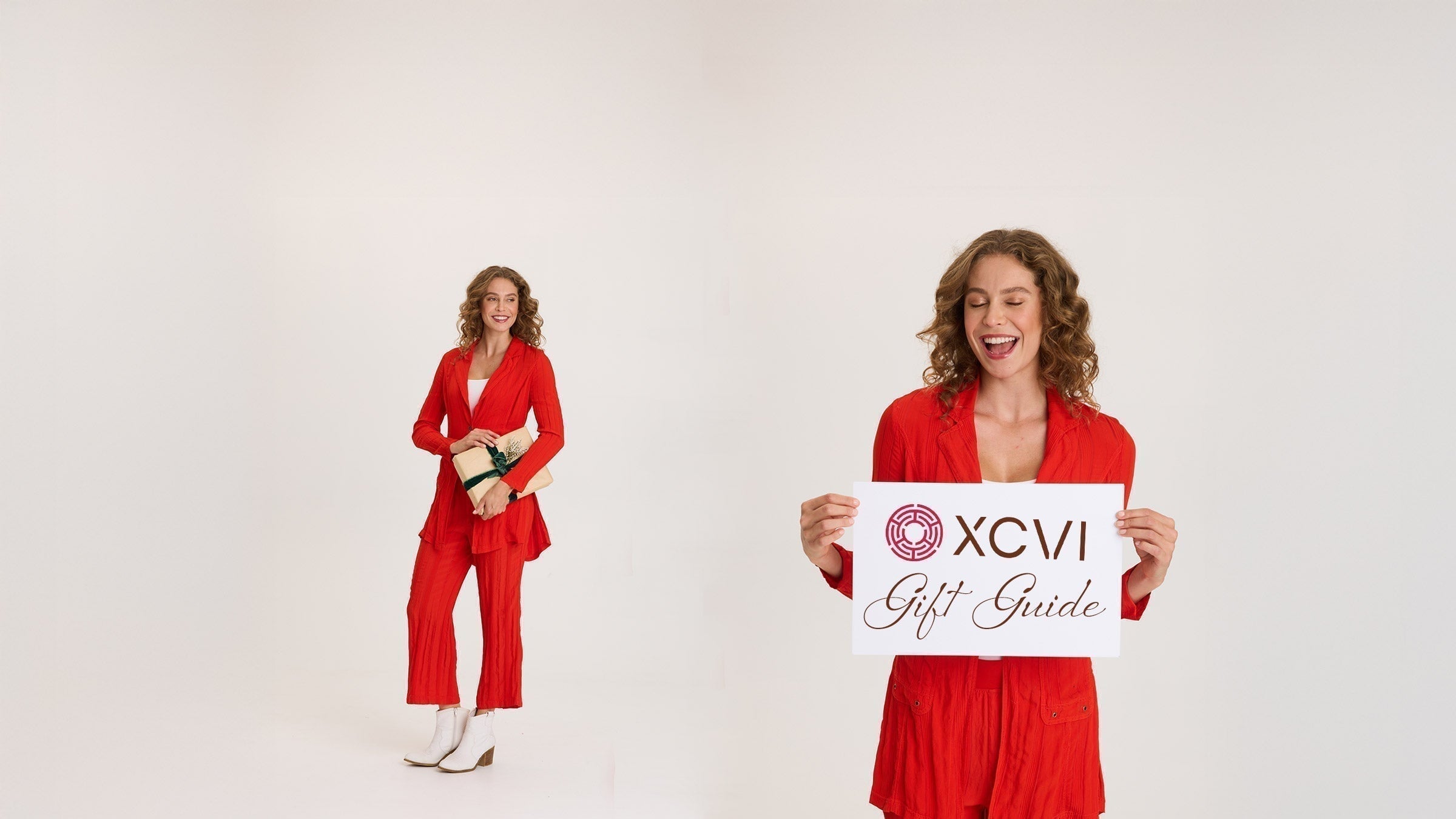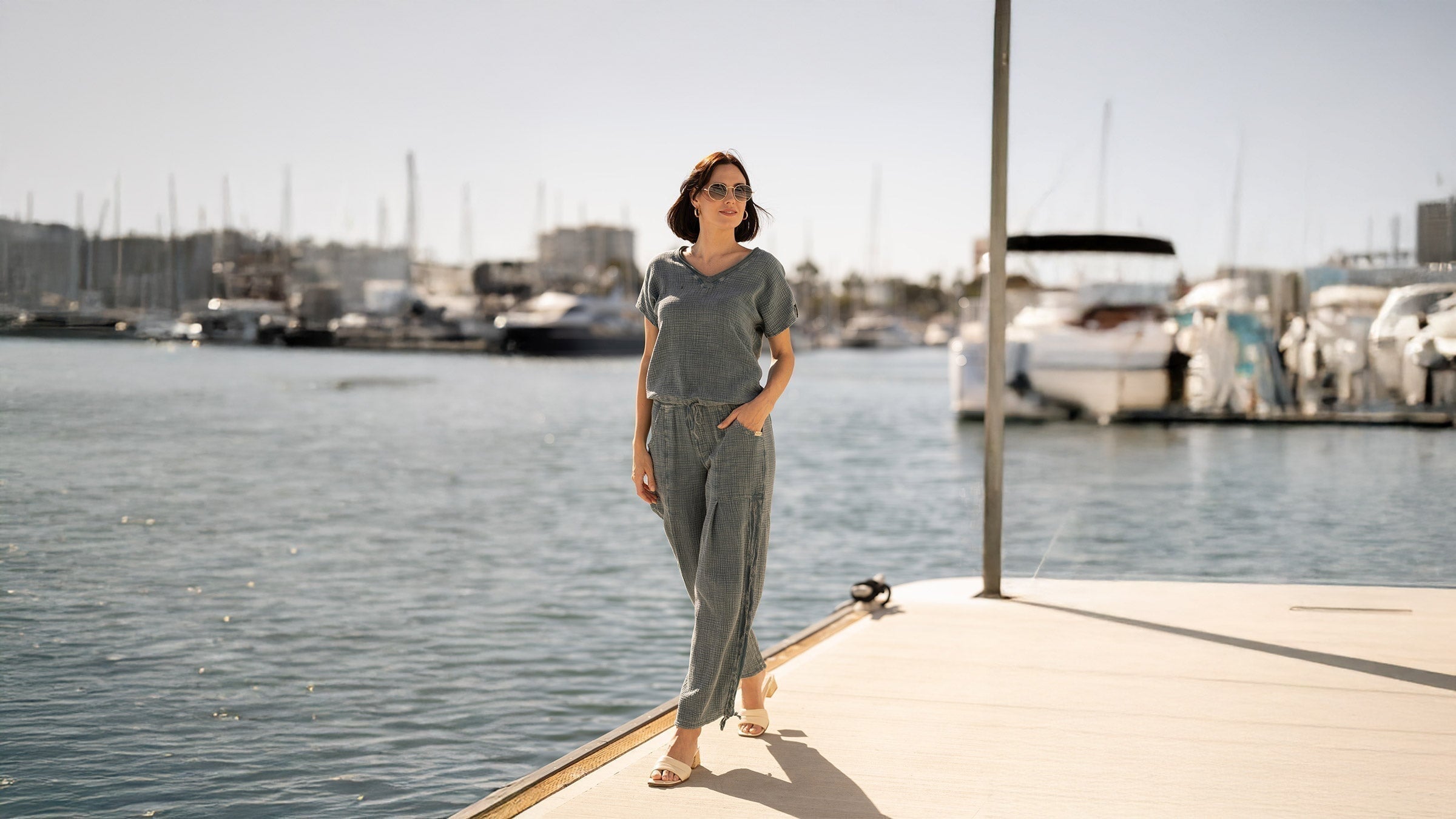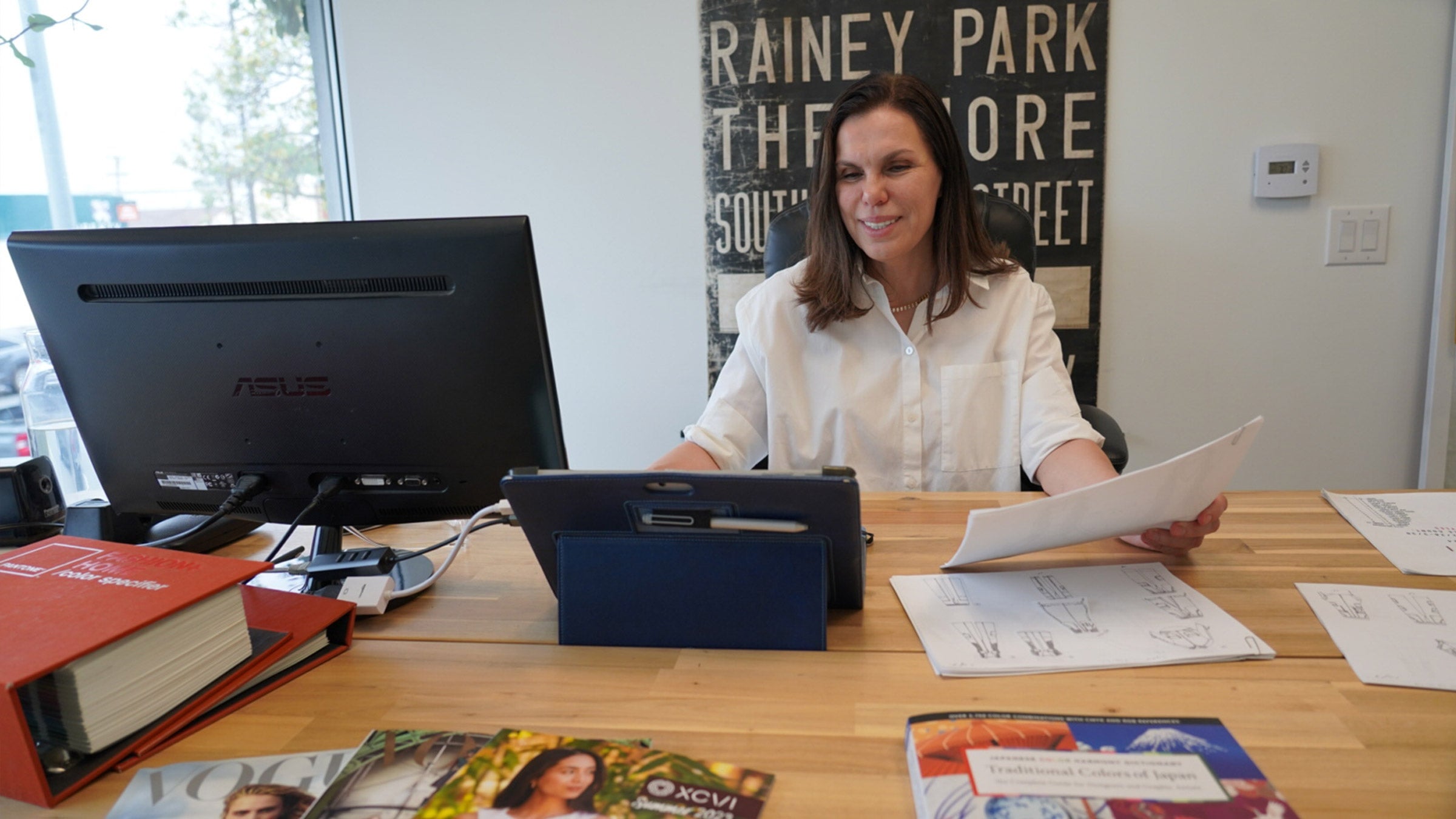
About Our Designer: Lilia Gorodnitski
On a Wednesday morning in late May, XCVI’s designer Lilia Gorodnitski invited me to join her in a fitting, where she’d be checking and adjusting next season’s collection on a fit model with her team.
In the sample room, Lilia pinpoints details and any changes that need to be made, inspecting each and every garment with carefully thoughtful eyes. As she works, Lilia tells me that a fitting is the perfect experience to get to know her process because so much design occurs in this part of the operation. “This is exactly what designing is. This is the first draft.”

I ask her if she ever designs just for fun and she answers very matter-of-factly and emphatically with a warm bite of humor. “This is for fun.” “But do you ever design for yourself,” I continue, wondering if she takes on other projects outside of XCVI. “This is for myself,” she says promptly, and I am immediately delighted by her curt yet sweet answers, and excited by just how much XCVI is ingrained in who she is and vice versa.
As they pin and tuck and mark and adjust the samples on the model, Lilia tells me how wonderful ecommerce has been for design. “Before” she explains, “I had to worry about how things look on the hanger. People decide if they like it in two seconds.” Now that everything is digital and modeled for ecommerce, she can approach design with how a piece looks on the body in mind rather than floating flat, freeing her from the constraints of “hanger appeal.”
Indeed, looking at all the colors and textures in the boxes feel invigorating and full of potential creation. Total seasoned pros, the team wraps up early, and later on Lilia invites me into her office to talk more thoroughly about her experiences and thoughts.
A fur sherpa-covered chair awaits me, and I take a seat across from the designer, who is looking through renderings of Summer 2024. Her ipad and sketch pen sit near her, and she reveals that she works both by hand as well as digitally.
Lilia immediately radiates warmth and passion for her craft, beginning her story by explaining to me that as fellow creatives, we can probably relate to one another. “Design is a love letter to my customers,” she says. “My customer knows what she likes and who she is. She has arrived. She has children, a career.”
Lilia knows and relates to her customers deeply, and it’s clear that she aims to make clothes that will enable people to live their best lives and feel amazing.
She describes how important it is to her to be in a calm, comfortable state when creating. “When I’m working I’m relaxed,” she explains. “It’s a meditative process. The best things flow. They need to come naturally with happy emotions.”
“I sketch a lot of stuff and put it in files,” she continues, discussing how many of her initial sketches don’t make it to production. “It’s all about precision in design and choosing…the life of an artist.”

Lilia’s design goes beyond simply choosing the best of her drawings. “When creating,” she says thoughtfully, “you’re connecting to something, a universal creative field maybe. Sometimes I’m just feeling the process and connecting to others through creativity.”
For Lilia, clothing and design feel like safe spaces. “Clothes feels familiar. They’re my comfort zone. I know who I am at my age and I’m very comfortable being authentic and really sharing how I feel.” She laughs. “I am the one having the most fun here. I have the best job.”
Lilia grew up in the former USSR. Born in the republic of Latvia, she soon learned how her creativity might be challenged. “Fashion was not important,” she explains. “It was important to have necessities. Everyone had the same apartment and the same things. If you want something different you have to make it yourself.”
Making clothing ran in the family. “My mom was always knitting". Her mom knitted. It was generations of people making clothes at home. My older sister made clothes for herself and for me, and when I was around eleven or twelve I started making clothes for myself. I never thought it was a profession.”
She finished high school and went on to take a professional sewing class, after which she worked in a custom tailoring shop for a year. Soon, she moved to the capitol, met her husband, and had her first child.
She opened her own business making men’s bridal clothes. “It was a wedding shop where people would come to buy. I made suits, vests, and hired pro tailors to sew.” Lilia had fallen into a groove, even knitting sweaters on a Japanese knitting machine on an ongoing basis.
In 1990, everything changed. The Berlin wall had collapsed and Lilia’s family faced civil unrest where they lived. “They started separating the republics,” she explains. “We didn’t know what was going to happen. There were shootings, sometimes the army would roll in.” Her husband flew to Los Angeles to see his brother, hoping to move the family to the United States in due time. He was the to first to move to California. “In half a year I arrived with my three year-old
son,” shares Lilia. “I arrived as a guest on a guest visa and then applied for political asylum.”
After a lengthy waiting period, Lilia received the paperwork and enrolled in college classes. “I thought I was going to be a pattern maker,” she says. “I never thought I was going to be a designer. It was not in my universe. Many Russians go into pattern-making and make good money. I’d just had my daughter as well and needed money.”
“Survival,” she surmises, “is what ultimately inspired me. My family’s needs.”
Los Angeles Trade Tech turned out to be a great fit. “It was a good college for working people like me with families, not full time or one of those expensive fancy places.” She succeeded immensely in school, taking home prizes in design, including first place for a 99-cents per yard burlap fringe set layered over olive leggings, and a third place win for an evening gown made of a discarded Italian tapestry draped to perfection with black lycra contrasted in back.
Along with her fellow students, her final designs were placed on display in California Mart. Before she had even graduated, these designs had landed her a job. “A woman who worked in the same building as the market saw my work displayed on dress forms and took down my number. She called me and asked me to be her design assistant.” Moved by the serendipity, Lilia accepted the offer and began working for this designer.

As Lilia continued work and school, the Zeltzer family had recently opened their store on Melrose Avenue and needed merchandise. Walking the street one day shopping her designs around, Lilia came across the storefront. “I walked into the store,” she explains, “and it was luck.” She smiles, recalling the initial
introduction and remarking on the magnetism she experienced with attracting what was meant for her.
She struck up a conversation with Marik Zeltzer, whose mother was also Russian. The two instantly connected, and after learning that she was a designer, Zeltzer had Lilia bring some pieces to sell, all of which were purchased almost instantly. “I bought fabric and would make all kinds of stuff.” She recalls purchasing black gauze fusing, a stick mechanism applied to the back of material that helps the fabric retain its shape, washing it, and then having a beautiful black cotton gauze on her hands. “I made twelve bias long dresses with a raw edge, spaghetti straps, and polyester contrast and they sold very quickly.”

Lilia was still finishing up school and working many hours when Marik told her he had come to the decision to only represent one line in his store. “He came to me and told me he was not going to work with other designers,” she explains. “So you know what I did?” She smiles, recounting her refusal to take no for an answer. “I went ahead and designed a small group of clothing. I bought terry and cotton and made a few things then went downtown and had them garment-dyed. Then I brought them to Marik.” She recalls the shock on his face. “He showed Gita (XCVI’s co-founder) and from there, we started the line and created the label.”
The year was 1996 and her current boss’ ideas were clashing with her own. “She asked me to close my business and said that she would give me a separate line within the company.” Lilia thought about it, and ultimately decided to part ways with the minimum-wage position she’d worked at for two years, looking ahead boldly at the opportunities before her.
“I was 31 when we started XCVI,” states Lilia. “We got a lot of orders, got an investor. The clothes were for everyday life but were also something different—casual, California style with a European twist.”
The birth of XCVI marked the beginning of Lilia’s prolific career as the designer and conceptualization behind the brand. Her experience in war-torn Russia and seeing friends face similar struggles as refugees granted her a unique sensitivity to the trials and pain of war on a global scale. “I have war on my mind a lot,” she says, which I can see pushes her to put forth the opposite in her work and relationships—an ethos of love and beauty—on a daily basis.
“You put energy designing with positivity, from a place of love. Not too forced.” Lilia feels that “forced” creativity results in products that look strained and insincere. “When you put yourself into it,” she concludes, “it captures the essence, mood, feeling, and emotion. That’s why it’s hard to knock off other people’s designs.”
The idea that oneself can so potently and tangibly translate inspires and excites Lilia, rather than overwhelming her. “Design challenges are an opportunity to be creative. How can you think negatively about this?” She feels passionately about being given a design prompt or constraints that push her to open new doors. “Can you design?” she asks rhetorically, “That’s already good news. Structure
and limiting creativity to specifics can make you very creative to fit into the box you’ve zoomed into.”
With a smaller and more highly specific scope, Lilia feels all the more energized.
“There’s no project in the world that I would feel is too difficult and I don’t want to do it. I’ve never said no to a project, ever.” For her, challenges represent a chance at something new. “It’s different tools and the possibility of creating something different that you’ve never done before.” Fresh methodology
and specific limitations only enable Lilia to fly higher.
“I was lucky,” says Lilia about XCVI, “because this is my style. Instinctively we created with what my style is. It’s hard to step into somebody’s vision because creation comes through you. It’s a little piece of you. I can’t be that person who doesn’t put themself into it. I have to put my stamp on it.”
XCVI is, undoubtedly, the work of Lilia’s heart, a remarkable symbiosis in which she inspires the clothing as much as it inspires her. Above all, she wants her customer to feel great. “They don’t want to be uncomfortable,” she states. “My customer won’t suffer. I like practical things and I can’t design impractical. Don’t get me wrong, I love luxury, but I was not raised this way.”
Lilia’s experiences growing up and fighting her way to thriving beyond survival allowed for an even deeper understanding of and connection to fashion, especially in the garments she creates. She seeks and soaks up inspiration and influence wherever she journeys, explaining how traveling both grounds and challenges her and is an important part of her work. She tells me that her favorite destination is a tie between Asia and Europe. “If I’m feeling uncomfortable when I’m traveling I just go look at clothes, go to the mall.
It’s my comfort.”
No matter where she is, finding design fuel is just a hop, skip, and a jump away.
“I love Korean design, it’s amazing,” she tells me as an example. “My favorite designers change but I love finding designers who I don’t know yet but I love what they’ve created.”
She explains how design eras change with time and so too do her preferences, but she cites Stella McCartney’s sporty-casual spirit as a current favorite, 90s Karl Lagerfeld as her hero, and Donna Karan and Alexander McQueen among many others. “I just love designs,” she laughs warmly.
In elementary interview fashion, I just had to know what Lilia’s favorite color is.
“Olive,” she smiles. “Green tones, always. “Pale blue. I like in between colors, not exactly bright.”
Her favorite texture is suede, although we discuss how second-hand leather is the way to go and ensure no impact on animals. Even her answers to the simplest of questions feel thoughtful, passionate, and incredibly revelatory of who she is. She wears her heart on her sleeve and her love for people and her profession rings clear as can be.
I ask her how she feels about 90s trends like cargo skirts and baggy pants making a comeback. “I’m so excited,” she replies, smiling. “Cargo is exactly XCVI and my style,” and she tells me how some of the very first pieces she made were unisex billowy harem pants. Lilia’s own preferences fall in line with current popular interests, and the now-evergreen 90s resurgence is a welcome cultural component in her design process. Nevertheless, great design has allowed XCVI to remain timeless and always unique, a characteristic blend of
experiences that translate to casual wear. Ever-evolving and full of functional surprises, Lilia’s designs stand the test of time in quality, style, and ease-of-wear. As she leafs through pages of design mock-ups for several seasons from now, I notice many never-before-seen styles and exciting new details.
Nearly thirty years in, Lilia is a hotspot of fresh ideas and innovative design tactics, an unending fountain of creative knowledge, and a bonafide translator for the inspiration that runsthrough her. As we choose new XCVI pieces and wear them proudly, we can hold close the love and care Lilia put into creating these garments by injecting a piece of herself into each and every one.
From making clothes at home in the USSR to bringing her designs into the Zeltzer store, Lilia has devoted her life to moving passionately and with fervor, creating a line that makes people feel great so that they may be great and bring their best selves to the table. Her design is testament to her experiences and to her deep respect for others, a tried-and-true example of her devotion to giving back the love and creativity she’s been blessed with and worked so hard to
cultivate. Her love for clothing and making people feel at home in their own skin fuels her work and enables beauty, connection, and support in a way that is deeply and truly felt. Thank you to Lilia for creating the designs that we live in and for being who you are so generously and graciously, each and every day.


